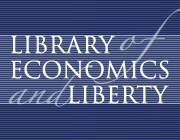
Chairmen of the Council of Economic Advisers (CEA) |

[An updated version of this article can be found at Chairmen of the Council of Economic Advisers in the 2nd edition.]
The Council of Economic Advisers (CEA) is the most prestigious group of applied economists in the United States. The CEA, which was formed after World War II, advises the U.S. president on economic policy. Presidents tend to appoint the three members, including the chairman, from their own party. Yet the advice given is relatively nonpartisan. Below the chairman and the two members are the approximately 15 senior and junior economists. Economists at all levels are appointed for their expertise in policy economics. On macroeconomics, the big difference between Democrat-appointed chairmen and members and Repubican-appointed chairmen and members has been on the potency of monetary and fiscal policy. Although more and more economists, Republican and Democrat alike, have, over the last few decades, come to believe that monetary policy is more potent than fiscal policy, Democrat-appointed chairmen and members have put more weight on fiscal policy than Republican-appointed chairmen and members. On many microeconomic issues, CEA economists at all levels and in Republican and Democrat councils agree. They favor free trade and free markets and tend to oppose price controls and regulation, although President Clinton's first council chairman, Laura Tyson, was a notable exception on free trade.
Council chairmen and their dates of service (with the president under whom they served in parentheses) are listed below.
| Chairmen of the Council of Economic Advisers (CEA) | |||||||||||||||||||||||||
|
|
||||||||||||||||||||||||

The cuneiform inscription in the Liberty Fund logo is the earliest-known written appearance of the word "freedom" (amagi), or "liberty." It is taken from a clay document written about 2300 B.C. in the Sumerian city-state of Lagash.